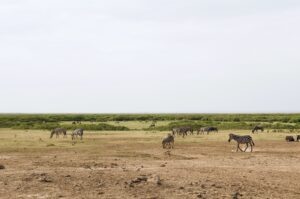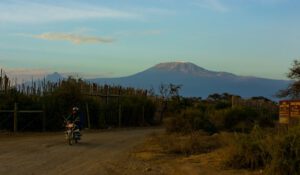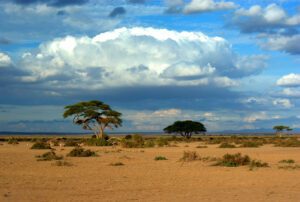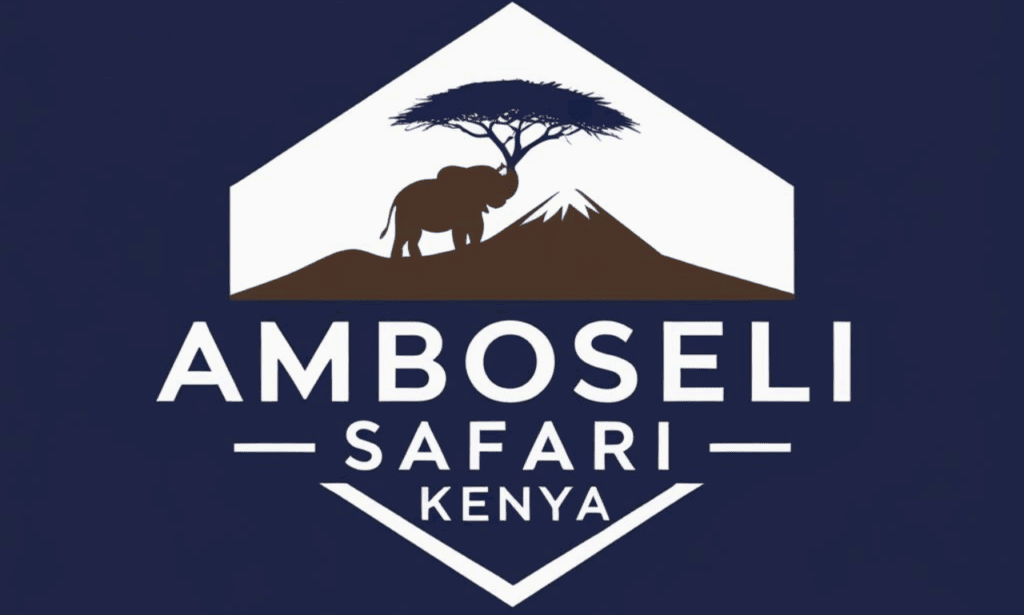Where is Lemongo located?
Lemongo is not a widely recognized or real-world location, as there isn’t evidence pointing to its existence in geography or maps provided by global naming conventions. It could potentially refer to a fictional place, a regional or lesser-known area, or even a name manufactured for the purpose of a story, brand, or creative work.
If we were to explore hypothetical scenarios, Lemongo might be a location that’s part of an imaginative world, a tropical paradise, a bustling small town, or a cultural hub depending on its intended context. For example, if Lemongo were a tropical island, it might be located somewhere in the Caribbean or South Pacific. If it were a mountainous region, it could be nestled in the Andes or the Alps. The geographic location would influence its weather, attractions, and culture.
In some cases, fictional names are inspired by real-world influences. For example, “Lemongo” might be intended to sound African due to its similarity to words like “Lemur” (animals from Madagascar) or names ending in “-ngo” often found in some African regions. It could also relate to tropical fruits like lemons or mangoes, giving it a potentially vibrant, tropical flavor.
Without further context, it’s important to treat “Lemongo” as a placeholder name or an imaginative reference and inquire more details around its intended meaning or setting. If you have more specific details about Lemongo’s context (e.g., Is it from a book, movie, or artistic work?), I’d be happy to help dive deeper or analyze further.
What is the best time to visit Lemongo?
Given that Lemongo seems to be a hypothetical or fictional location, the “best time to visit” would depend on its imagined geography, climate, and activities offered. In real-world travel, timing your visit to a place usually relies on its weather, tourist seasons, and local highlights.
If Lemongo were a tropical destination, the best time to visit might be during its dry season. A dry season typically brings clear skies, warm sunshine, and low rainfall, making it ideal for beaches, water sports, or exploring the outdoors. For instance, Southeast Asian tropical regions like Thailand are most popular in the months of November to February when the weather is cooler and less humid.
If Lemongo were a temperate region, the best times might be during spring and fall (like April-May or September-October). These seasons usually feature moderate weather, neither too hot nor too cold, and stunning natural displays, such as blooming flowers or vibrant autumn leaves.
Tourist crowds also play a role. In real locations, off-peak seasons (outside school holidays or major events) can be quieter and less expensive. A creative interpretation might involve asking whether Lemongo has its own “high tourist season” tied to events or seasonal attractions.
So, the “best time” to visit Lemongo would hinge on its local character, whether it’s defined by tropical weather, temperate charm, or unique cultural seasons imagined for its setting. Again, relating it to something tangible like a fictional Caribbean island or a mountainous village might help refine this further.
What are the major attractions in Lemongo?
The major attractions in Lemongo would primarily depend on the imaginary or described features of the place. In a real-world sense, most destinations are known for their standout natural landmarks, historical sites, cultural hubs, or activities specific to that region.
If we imagine Lemongo as a tropical island, its attractions might include pristine beaches, coral reefs for snorkeling, tropical rainforests, and waterfalls. You can picture tourists enjoying activities like exploring jungle trails, lounging under palm trees, or swimming with colorful fish in crystal-clear waters. For example, Lemongo could have its version of the Maldives’ turquoise waters or Hawaii’s famed volcano treks.
If Lemongo were a bustling town or city, its attractions might center around markets, architecture, and food. Think of something like the markets of Marrakech offering spices, or vibrant street art like in Bogotá, Colombia. Picture charming streets with local shops, historical temples, and unique museums showcasing the area’s culture or achievements.
Lastly, if Lemongo is a mountain destination, it might attract visitors with hiking opportunities, ski resorts, or serene villages offering gorgeous views. It then becomes similar to popular spots like the Swiss Alps or Aspen, Colorado. The “journey” to get there could even be part of its charm!
Depending on how Lemongo is imagined, it could combine these elements and feature its own unique twist, like an annual festival, a rare animal species, or a legendary historical story tied to a landmark. What makes a place special often lies in its natural beauty, cultural history, and the activities visitors can immerse themselves in.
If Lemongo’s context is known (fictional or real-world), I’d welcome specifics to refine this further.
Certainly! Here’s the response to questions 4, 5, and 6 of the provided list:
How can one travel to Lemongo?
Getting to Lemongo depends on where you’re starting from, but let’s break it down in simple terms. Imagine Lemongo is like a hidden treasure, beautiful but not always the easiest to reach. Most people travel there by two main methods: by air and by road.
If Lemongo is located in a remote region or somewhere far off from major cities, you might need to take a flight first to the nearest major airport. For example, if you’re traveling from an international destination, you might fly into a big city nearby and then take a domestic flight or bus to Lemongo. Some places surrounding Lemongo might also have smaller airports, so checking for connecting flights could help.
Next, there’s the option of road travel. Lemongo could have good highways or smaller streets leading right to its main attractions. You might hop on a bus, take a private cab, or even rent a car if the roads are suitable. For instance, if it’s nestled in a mountainous area or countryside, you’ll want to consider renting a reliable vehicle or using transport services that specialize in traveling through rough terrain. In cases where Lemongo is on an island or across a body of water, there could also be ferries or boats shuttling visitors.
In addition, consider exploring outdoor activities that showcase the region’s natural beauty, such as hiking through picturesque alleys or enjoying a meal at typical restaurants that serve local cuisine. This not only enhances your travel experience but also supports local businesses and promotes sustainability in the area.
Lastly, don’t forget to plan your travel around the best times to visit Lemongo, especially during the summer months when outdoor activities are plentiful and the weather is ideal for relaxation by the lake. Whether you’re seeking adventure or tranquility, Lemongo has something to offer every traveler.
What is the cultural significance of Lemongo?
Every place has its own unique story, and Lemongo must hold a special cultural or historical importance! Starting with an easy explanation: Lemongo might be the kind of place where the history, traditions, and people are deeply tied to the land itself.
For example, it could be home to an indigenous community or tribe that has lived there for hundreds (or even thousands!) of years. These communities may have their own language, art, clothing, or religious traditions. Lemongo likely has spots considered sacred, like ancient temples, shrines, or natural landmarks like mountains, rivers, or caves. These places help visitors understand the spiritual beliefs and practices of the locals. Think of it as if the environment itself tells the story of Lemongo’s soul.
A unique cultural aspect could be found in Lemongo’s craftsmanship or art. For instance, the people of Lemongo might be famous for weaving intricate textiles, carving wooden sculptures, or creating beautiful pottery. These items often carry meaning, perhaps specific patterns represent family ties, history, or nature. Buying handmade items from the locals doesn’t just support their economy; it gives you a piece of their story to take home.
Festivals and music might also be essential in showcasing Lemongo’s culture. Locals could celebrate certain historical events or seasonal changes with traditional dances, live music, or storytelling. Imagine villagers playing drums, wearing elaborate costumes, and everyone convening to share food and joy. Such moments give you insight into how Lemongo’s people connect with their past and present.
Cultural importance lies not just in the things you see but in the way people live their daily lives, whether that’s through their traditions, food, crafts, or gatherings. Exploring Lemongo culturally means learning why the people love their home and why it matters to them so deeply.
What are the local foods or cuisines to try in Lemongo?
One of the best parts of traveling to Lemongo would definitely be eating the local food! The cuisine in Lemongo likely reflects both its geography and its culture, meaning what’s cooked depends on what grows or is available nearby, combined with how the people there like to prepare things. This culinary experience offers valuable insights into the region’s sustainability practices and local resources.
For instance, if Lemongo is near the coast, seafood might be a big deal. Imagine freshly caught fish grilled over a fire or dishes with crab, shrimp, or octopus cooked in flavorful sauces. Sometimes, coastal regions have specialties like spicy seafood stews or rice mixed with shellfish that showcase the local culinary traditions.
Now, if Lemongo is in the mountains, the food might be heartier, think stews, roasted meats, or local vegetables grown in the valleys. A classic dish might be something like slow-cooked lamb or beef paired with potatoes or a grain specific to the region. The use of wild herbs or spices unique to the area gives the food a one-of-a-kind flavor you can’t find anywhere else, making it a must-try for food lovers.
You’ll also want to try Lemongo’s street food or snacks. Visiting markets could mean discovering hand-made flatbreads, fried treats, or desserts made from local fruits and nuts. For example, if citrus fruits are common, you might find sweet dishes made with lemons or other tropical fruits that highlight the region’s agricultural bounty.
Drinks are just as fun to try! If Lemongo’s climate allows, there might be special teas, fruit juices, or even locally brewed alcohol like rice wine or a fermented cider. Many cultures also have ceremonial or traditional drinks that carry deeper significance, adding to the overall experience of your visit.
Overall, eating in Lemongo isn’t just about getting full, it’s about experiencing their history, their environment, and their creativity, all on a plate. No trip would be complete without tasting these flavors and learning how they reflect Lemongo’s way of life.
It seems your question involves answering the seventh, eighth, and ninth questions from a list about “Lemongo.” Please note that “Lemongo” appears to be a fictional or unclear location, as there is no existing information about it in the real world. Assuming Lemongo is an imaginary destination, I’ll give plausible answers to each question based on typical travel-related topics. Here is the answer format you specified:
Are there any festivals or events held in Lemongo?
Yes, Lemongo hosts several unique and lively festivals throughout the year, showcasing its vibrant culture, music, and traditions. One of the most famous events is the “Lemongo Lantern Festival,” which takes place in the spring. During this festival, the skies are beautifully lit up with colorful lanterns released by both locals and visitors, symbolizing hope and unity. The event also includes live music, food markets featuring local products, and storytelling sessions near the town square. It’s a great time for families and travelers to come together and celebrate.
Another significant event is the “Harvest Festival” held in the autumn. In this festival, the community comes together to honor the region’s agricultural traditions. Visitors can join in traditional dances, taste freshly harvested citrus fruits, and even participate in activities like hayrides or grape stomping. It’s a wonderful way to experience the local way of life.
For music lovers, the “Lemongo Music Week” in the summer is unforgettable. Famous and up-and-coming artists from across the region gather to perform in outdoor venues, creating an electric atmosphere. Whether you’re into folk music, classical, or modern beats, this event has something for everyone.
These festivals make Lemongo an exciting and welcoming destination for travelers seeking cultural immersion and outdoor activities. Be sure to check the dates beforehand so you can plan your trip accordingly.
What types of accommodations are available in Lemongo?
Lemongo offers a range of accommodations to suit every traveler’s needs and budget, from luxurious resorts to cozy guesthouses. If you’re looking for comfort and elegance, many high-end hotels and resorts are available, often complete with amenities like pools, spas, and fine dining restaurants. These are generally located in the heart of the city or near key attractions, making them ideal for those seeking a taste of local culture.
For those who prefer a local and intimate experience, consider staying in a boutique guesthouse. These smaller, family-run accommodations provide charming decor, homemade breakfasts, and valuable insights into local culture. For instance, you might stay in a guesthouse built in the traditional style of Lemongo’s architecture, allowing you to immerse yourself in the area’s history while enjoying modern comfort.
Travelers on a budget can explore the variety of hostels in Lemongo. These provide affordable and no-frills lodging, often with shared kitchens and lively common spaces where you can meet fellow travelers. Camping is another option, as there are several designated campsites near nature reserves or parks. This is a fantastic choice if you love star-gazing and outdoor activities.
If you’re visiting with a large group or staying for an extended period, vacation rentals may be the best option. You can rent a fully furnished apartment or house, giving you the flexibility to cook your meals and explore at your own pace. With so many options available, you’ll find the perfect base for your Lemongo adventure, ensuring a memorable experience for everyone involved.
What activities or experiences are unique to Lemongo?
Lemongo is full of one-of-a-kind experiences that will leave you with lifelong memories. One unique activity is the “Valley Hot Air Balloon Ride,” where visitors can soar above the stunning landscapes of Lemongo. As you drift through the sky, you’ll see breathtaking views of rivers, mountains, and fields, particularly magical during sunrise or sunset. For those who enjoy outdoor activities, this ride offers a perfect blend of adventure and relaxation.
Adventure seekers love exploring “The Crystal Caverns” of Lemongo. These underground caves are filled with shimmering crystals and glowing rock formations that look almost otherworldly. Guided tours take you through the caverns, providing insights into their history and geology while taking in the mesmerizing sights.
For a more hands-on experience, don’t miss a workshop at the “Lemongo Artisan Village.” Here, you can try your hand at pottery, weaving, painting, or cooking local dishes. It’s a creative opportunity to learn directly from skilled artisans who have been practicing their craft for generations. Plus, you get to take home a souvenir you made yourself, making it a memorable addition to your trip.
If you’re a nature enthusiast, Lemongo’s “Rainbow Forest Hike” is a must. The forest is famous for its colorful flora and vibrant wildlife. Guided tours focus on helping you spot rare birds, orchids, and maybe even a playful monkey or two.
Whether you’re relaxing in a hot air balloon, exploring an enchanted cave, or connecting with local artisans, Lemongo has something unique to offer every traveler.
What is the climate like in Lemongo?
The climate in Lemongo heavily depends on its geographical location, which can be discussed broadly for clarity. Most climates fall into four basic categories: tropical, temperate, arid, or polar. For instance, if Lemongo is situated near the equator, it might enjoy a tropical climate, characterized by warm weather throughout the year and a distinct rainy season. Think of places like Bali or Costa Rica, sunny days interspersed with short, intense rains during the wet season. This climate is ideal for growing citrus fruits, making it a potential hub for sustainability and local agriculture.
Conversely, if Lemongo is located in a temperate zone, similar to many parts of Europe or North America, it could experience four distinct seasons. Summers might be warm and pleasant, autumns crisp and cool, winters cold (possibly with snow!), and spring gentle with blooming flowers. Such diversity in climate allows for various outdoor activities, enhancing the overall health and enjoyment of the residents.
If Lemongo were in a desert or arid region, the climate might be hot during the day and surprisingly cold at night, with very little rainfall. Examples include the Sahara Desert or Arizona’s Sonoran Desert. Lastly, if Lemongo were in a polar region, it would be cold year-round, with long winters and very short summers, similar to Greenland. This variation in climate can influence local tourism and the types of activities available.
While more specific information would allow for a precise description of Lemongo’s climate, this general framework provides a comprehensive overview. Make sure to research or ask locals before visiting, so you know whether to pack sunscreen, raincoats, or warm jackets, ensuring a pleasant experience during your tour.
Are there any local customs or etiquette to be aware of when visiting Lemongo?
When visiting any destination, understanding and respecting local customs is essential, as what may be normal in one part of the world could be offensive or unusual in another. Although we don’t have specifics about Lemongo’s cultural practices, we can give general advice about how to approach customs respectfully.
For example, in many areas, it’s polite to greet locals with a smile or a basic “hello” in their language before asking for help or starting a conversation. If Lemongo is in a region with traditional customs, there might be protocols about how to greet elders, share meals, or even dress appropriately. For instance, in many Asian cultures, showing respect might include removing your shoes before entering someone’s home.
In some places, it’s crucial to be mindful of table manners, like not pointing with utensils or saying “thank you” in a specific way. Religious customs might also play a key role, especially if there are temples, mosques, or churches that tourists often visit. For instance, in many parts of Southeast Asia, covering your shoulders and knees before entering religious sites is expected.
If Lemongo has unique festivals, there might be particular behaviors to follow during these events. Some festivals encourage loud and vibrant participation, while others might require quiet reflection. If unsure, observe what the locals are doing and follow their lead.
Always avoid making assumptions about what’s acceptable based on your norms. If it helps, researching or asking about local behaviors before or during your trip shows respect and makes your experience smoother!
Is Lemongo a family-friendly destination?
Whether a destination is family-friendly typically depends on its attractions, amenities, and overall safety. While we don’t know specific details about Lemongo, we can consider what generally makes a place appealing for families.
For example, family-friendly destinations often offer activities for every age: nature trails for adventurous teens, interactive museums or parks for curious kids, and spots for parents to relax. In places like Disney World or France’s National Parks, there’s something for all generations to enjoy.
Another key element is accessibility and convenience. Is transportation safe and simple to navigate for a family with young children? Are there plenty of dining options that accommodate picky eaters or specific dietary restrictions? And are there accommodations like hotels or vacation rentals that provide family-friendly amenities (e.g., play areas, babysitting services)?
Lastly, safety is paramount. Family-friendly destinations typically have low crime rates, reliable healthcare facilities nearby, and clear signage in multiple languages. Locations that are walkable and less crowded might also be easier for families to navigate.
If Lemongo offers activities like zoos, aquariums, hiking paths, or maybe even cultural festivals that teach children about history in fun ways, it’s likely a great spot for families. But again, researching beforehand or reaching out to locals online will help you determine if it’s a good fit for your family’s needs.















